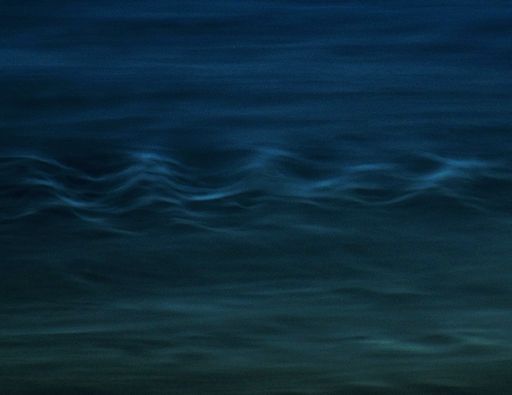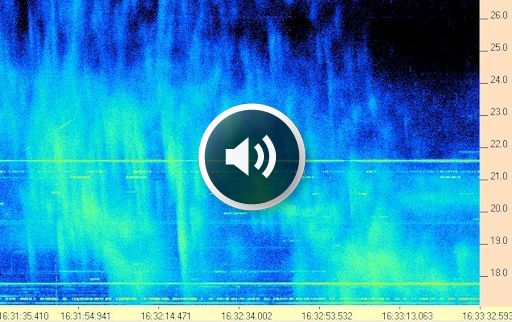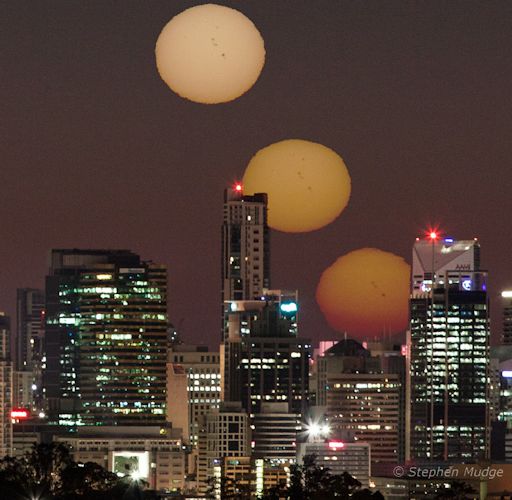When is the best time to see auroras? Where is the best place to go? And how do you photograph them? These questions and more are answered in a new book, Northern Lights - a Guide, by Pal Brekke & Fredrik Broms. | | |
QUIET WITH A CHANCE OF FLARES: Solar activity is low, but the quiet is unlikely to persist. There are three sunspots with unstable magnetic fields capable of strong eruptions: AR2108, AR2109, AR2113. NOAA forecasters estimate a 75% chance of M-flares and 15% chance of X-flares on July 10th. Solar flare alerts: text, voice
SERPENTINE NOCTILUCENT CLOUDS: After weeks of sightings over Europe, noctilucent clouds (NLCs) are spreading to North America. "A spectacular display emerged over the Edmonton area on July 8/9," reports Canadian photographer Mark Zalcik. "For awhile there were multiple zones of billow-type NLC, including the snake-like one in this photo."

NLCs are Earth's highest clouds. Seeded by "meteor smoke," they form at the edge of space 83 km above Earth's surface. When sunlight hits the tiny ice crystals that make up these clouds, they glow electric blue.
In the northern hemisphere, July is the best month to see them. NLCs appear during summer because that is when water molecules are wafted up from the lower atmosphere to mix with the meteor smoke. That is also, ironically, when the upper atmosphere is coldest, allowing the ice crystals of NLCs to form.
The natural habitat of noctilucent clouds is the Arctic Circle. In recent years, however, they have spread to lower latitudes with sightings as far south as Utah and Colorado. This will likely happen in 2014 as well. Observing tips: Look west 30 to 60 minutes after sunset when the Sun has dipped 6o to 16o below the horizon. If you see blue-white tendrils zig-zagging across the sky, you may have spotted a noctilucent cloud.
Realtime NLC Photo Gallery
RADIO STATIC FROM THE SUN: The M6-flare of July 8th had a noisy side-effect. It caused a roar of static to issue from the loudspeakers of shortwave radios on Earth. In New Mexico, amateur radio astronomer Thomas Ashcraft recorded the sounds:

"The M6.5 flare from sunspot AR2113 generated a complex mix of Type II and Type IV solar radio emissions," says Ashcraft. "This two minute audio sample, recorded in stereo at the frequencies of 23 MHz and 21 MHz, captures the dynamic character of the bursts."
Radio bursts such as these are sparked by shock waves moving through the sun's atmosphere. Set in motion by flares, these shock waves excite plasma instabilitties that emit static-y radio waves. Becase there are a whole variety of plasma instabilites, there is a corresponding variety of radio burst types. Ashcraft recorded a mixture of Type II and Type IV. More examples may be found here.
Realtime Space Weather Photo Gallery
SPOTTY SUNRISE: Astrophotographers around the world are snapping pictures of this week's large sunspots. "After taking some sunspot images yesterday afternoon, I was thinking that it would be nice to capture the spotty Sun at sunrise," says Stephen Mudge of Brisbane, Australia. "And then I thought it would be even nicer if that sunrise was behind the city buildings. So after a bit of time studying Stellarium and looking at maps, and then a quick reconnaissance drive, I settled on Green Hill Reservoir as a suitable location for a photo shoot." This was the result

"I got up there just as dawn started and took some panoramas of the city. Then, with the camera still in position on the tripod, I added a Baader solar filter and captured the rising sun with exposures every 3.5 minutes," explains Mudge. "I managed to pick the location perfectly (with the Sun rising right in the middle of the city), and the weather cooperated beautifully, so I'm pretty happy with the result!"
Who knew sunspots could be a muse for creative photography? Check the realtime photo gallery for more examples.
Realtime Comet Photo Gallery
Realtime Aurora Photo Gallery
Every night, a network of NASA all-sky cameras scans the skies above the United States for meteoritic fireballs. Automated software maintained by NASA's Meteoroid Environment Office calculates their orbits, velocity, penetration depth in Earth's atmosphere and many other characteristics. Daily results are presented here on Spaceweather.com.
On Jul. 10, 2014, the network reported 3 fireballs.
( 3 sporadics)

In this diagram of the inner solar system, all of the fireball orbits intersect at a single point--Earth. The orbits are color-coded by velocity, from slow (red) to fast (blue). [Larger image] [movies]
Potentially Hazardous Asteroids (
PHAs) are space rocks larger than approximately 100m that can come closer to Earth than 0.05 AU. None of the known PHAs is on a collision course with our planet, although astronomers are finding
new ones all the time.
On July 10, 2014 there were 1488 potentially hazardous asteroids.
Notes: LD means "Lunar Distance." 1 LD = 384,401 km, the distance between Earth and the Moon. 1 LD also equals 0.00256 AU. MAG is the visual magnitude of the asteroid on the date of closest approach. | | The official U.S. government space weather bureau |
| | The first place to look for information about sundogs, pillars, rainbows and related phenomena. |
| | Researchers call it a "Hubble for the sun." SDO is the most advanced solar observatory ever. |
| | 3D views of the sun from NASA's Solar and Terrestrial Relations Observatory |
| | Realtime and archival images of the Sun from SOHO. |
| | from the NOAA Space Environment Center |
| | the underlying science of space weather |

